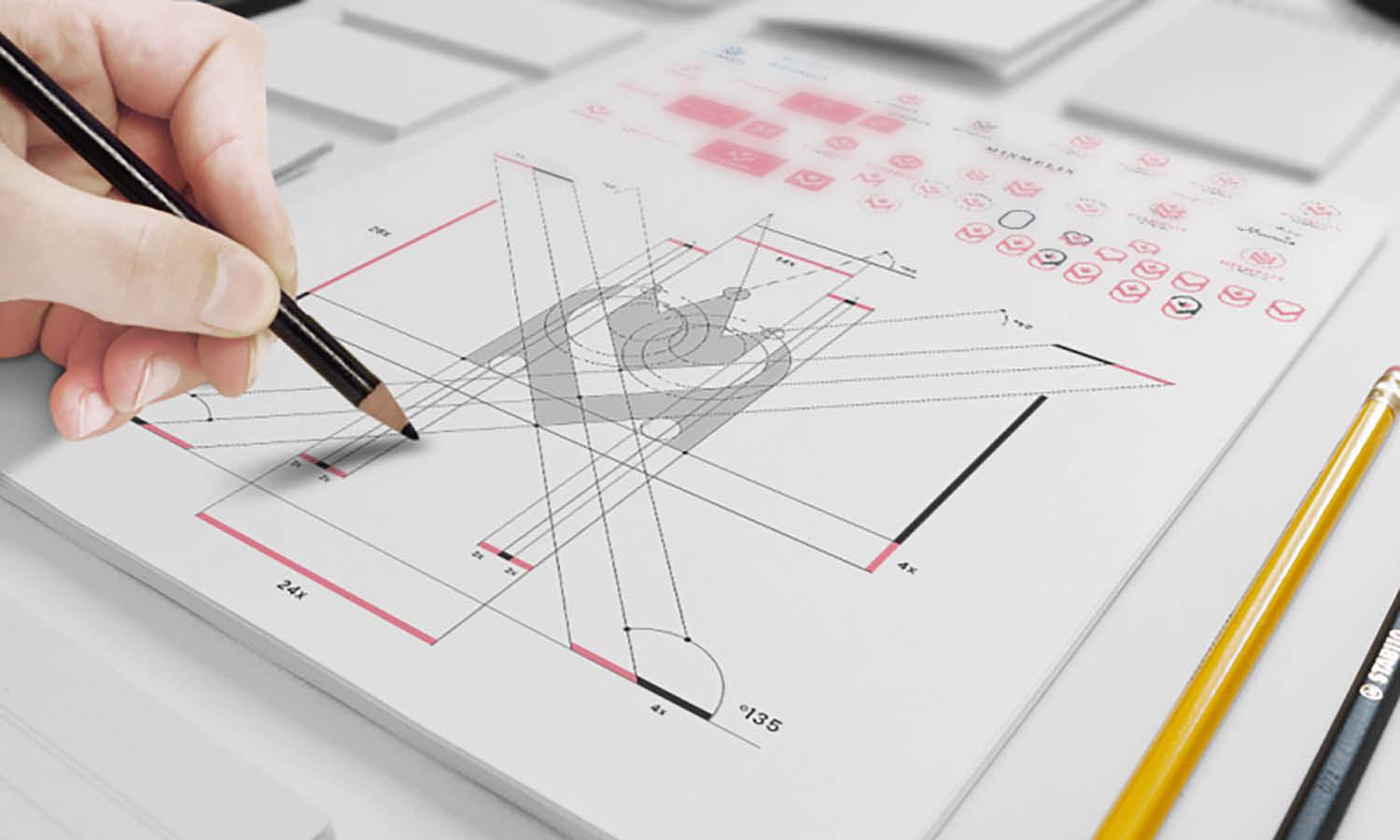What Is Flatten PDF File And How To Do It?

PDF files stand as a universal format used extensively for sharing documents across different platforms. However, handling complex PDFs with multiple layers can often lead to compatibility issues or excessive file sizes, which is where the need to flatten PDF files arises. Flattening a PDF file refers to the process of merging all the content layers into one singular layer, transforming any interactive elements—such as forms and annotations—into static images. This procedure not only ensures that the document is viewed consistently across various devices and software but also enhances security by preventing further modifications.
Before you know how to merge PDF file, you will need to know what it is. Why? Because the file extension is not the normal PDF. It has more than just having a hardly editable document. The extension did its best in providing non-editable text to protect all of the content.
The Benefits of Flattening PDF Files
Flattening a PDF file offers multiple benefits that enhance the functionality and security of digital documents. Firstly, a flattened PDF ensures compatibility across different platforms and devices. By merging all layers into one, the document becomes a single image that can be viewed consistently, regardless of the software or hardware used. This is particularly important in professional settings where documents need to maintain their integrity when transferred among various stakeholders.
Another significant advantage is the increased security it provides. When you flatten a PDF file, all editable fields and annotations become part of the document’s imagery, which prevents unauthorized edits. This feature is crucial for legal documents, contracts, and other sensitive information that must remain unaltered after finalization.
Moreover, flattening reduces file sizes, making PDFs easier to email and quicker to upload and download. This streamlined version of the document also loads faster on any device, improving accessibility and user experience. Additionally, it simplifies the printing process. Printers handle flattened PDFs more efficiently because they don’t have to process multiple layers or interactive elements, leading to faster and more reliable outputs.
When to Flatten a PDF File
Flattening a PDF file is a crucial step in various document management scenarios where maintaining a consistent format across different platforms is essential. One of the primary reasons to flatten a PDF is before printing. This process ensures that all elements of the document appear exactly as intended, regardless of the printer's settings or capabilities. Additionally, flattening is vital when submitting official documents electronically, such as legal forms or contracts, to prevent any further modifications by the receiver. It guarantees that interactive elements like checkboxes, form fields, and notes become non-editable and part of the document's imagery, thus preserving the document's integrity.
Another important scenario for flattening involves sharing documents widely via email or online platforms. Flattening reduces the risk of display issues due to varying software interpretations of layering or interactive elements, ensuring the document appears the same to every viewer. Lastly, security concerns prompt users to flatten PDFs.
By converting all interactive components into static images, the document is safeguarded against unauthorized edits, which is crucial for sensitive information. Recognizing when to flatten a PDF file helps in enhancing document security, ensuring compatibility, and maintaining visual consistency.
Tools Required to Flatten PDF Files
To flatten a PDF file effectively, you need reliable software that can merge all layers and elements into one flat image. Adobe Acrobat Pro DC stands as a top choice for professionals due to its comprehensive features that allow users to edit, create, and, importantly, flatten PDF files seamlessly. This software is a robust option for ensuring that all interactive elements are permanently embedded in the document.
Another popular tool is Foxit PhantomPDF, which provides a user-friendly interface and powerful PDF editing capabilities, including PDF flattening. This tool is suitable for business professionals who need a cost-effective alternative to Adobe Acrobat.
For those who prefer online tools, there are several web-based options available that can flatten PDF files without the need to install software. Websites like PDF2Go and Smallpdf offer simple, drag-and-drop interfaces where users can upload their PDFs and flatten them directly in the browser. These services are convenient for users who need to flatten documents quickly and are not handling sensitive or private information.
Open-source enthusiasts can turn to PDFsam, a free tool that, while primarily used for merging and splitting PDF files, also includes features for converting PDFs to flattened versions. It’s ideal for those who seek a no-cost solution that respects user privacy.
Choosing the right tool depends on your specific needs, such as the level of security required, frequency of use, and whether you need additional features beyond PDF flattening.

Step-by-Step Guide to Flatten a PDF Using Adobe Acrobat
Flattening a PDF file in Adobe Acrobat is a straightforward process that ensures your document retains its intended layout and content when shared or printed. Here’s how to do it:
Open Your PDF: Start by opening the PDF you wish to flatten in Adobe Acrobat Pro DC.
Print to PDF: Go to the ‘File’ menu and select ‘Print’. In the printer options, choose ‘Adobe PDF’ as the printer. This method redirects the output back into a PDF creator, which inherently flattens the PDF.
Set the Output: In the print dialogue box, ensure all settings match the original document’s layout and quality. Confirm that no layers or forms are excluded from the print range.
Save the Flattened PDF: Click on ‘Print’ in the dialogue box. Adobe Acrobat will prompt you to save the new PDF. Choose your desired location, input a file name, and save the document. This newly created PDF will be a flattened version of the original.
Verify the Document: After saving, open the new PDF to verify that all elements appear as expected without any layers or editable fields.
This process is particularly useful for securing documents and ensuring that they appear the same no matter where or how they are opened. Whether for professional presentation or secure document sharing, flattening via Adobe Acrobat provides a dependable way to maintain your document’s integrity.
Using Online Tools to Flatten PDFs
Online tools offer a convenient and quick way to flatten PDF files without the need for installing software. These web-based solutions are ideal for users who need to flatten documents occasionally or on the go. Here’s how you can use online tools to flatten a PDF file:
Firstly, select a reputable online PDF service like Smallpdf or ILovePDF. These platforms are known for their ease of use and security measures, ensuring that your documents are handled safely. Navigate to their website and look for the PDF flattening option, which might be listed under tools like ‘PDF to PDF/A’ or directly as ‘Flatten PDF’.
Upload your PDF file by dragging and dropping it into the designated area on the website. Once uploaded, the tool will process your document. This usually involves merging all interactive elements such as annotations, forms, and layers into a single image layer within the document, thereby flattening it.
After the process is complete, the website will allow you to preview the flattened PDF. Review the document to ensure that all content appears correctly with no editable fields remaining. If satisfied, you can download the flattened PDF to your computer.
Using online tools to flatten PDF files is particularly useful for those who do not frequently handle sensitive information or require a quick solution without additional software installations. It’s a straightforward and efficient method to prepare PDFs for sharing, publishing, or printing.
Manual Flattening vs. Software Tools
When it comes to flattening PDF files, the approach can be manual or through specialized software tools, each having its own advantages and contexts of use.
Manual flattening typically involves a simple process of printing the PDF to a new PDF document. This method uses a virtual printer on your computer system that is set to print to PDF rather than an actual printer. Here, you open the document, select the print option, and choose ‘Save as PDF’ or ‘Microsoft Print to PDF’ depending on your operating system. While this method effectively flattens the PDF by creating a static image of the document, it might not always maintain the original’s quality or layout precisely.
On the other hand, software tools designed to flatten PDF files, such as Adobe Acrobat Pro and Foxit PhantomPDF, offer more control and reliability. These tools provide specific options to flatten all elements of a PDF, including forms, annotations, and layers, ensuring that the document appears exactly as intended. They also maintain high-quality output and support batch processing, which is beneficial for handling multiple documents simultaneously.
While manual flattening is quick and doesn't require additional software beyond what is already installed on most computers, it can be less reliable for maintaining exact document fidelity. Software tools, although requiring a learning curve and potentially an investment, offer more robust features for professional needs.
Choosing between manual flattening and using software tools depends on your specific requirements, such as document complexity, frequency of need, and concern for document integrity. For professional settings where accuracy and consistency are critical, software tools are generally the preferred option.
How to Check If a PDF Is Flattened
To verify if a PDF file has been successfully flattened, there are several methods you can employ. One straightforward approach is using Adobe Acrobat or another professional PDF editor to inspect the document's properties.
Open the PDF in your PDF viewer or editor and look for any layers or interactive elements such as forms, annotations, and multimedia content. In Adobe Acrobat, you can use the 'Layers' panel (usually found under the ‘View’ menu) to check if the document contains any layers. If no layers are visible, it's likely that the PDF has been flattened.
Another method is to try selecting text or graphics within the PDF. If the document is flattened, you should not be able to select or interact with individual elements separately because they have been merged into a single image layer. Everything appears as one whole image, and you cannot highlight or edit anything specifically.
For a more technical approach, you can examine the PDF's structure using PDF analysis tools that can show the detailed composition of the document. Tools like PDF-XChange Editor offer functionalities where you can look deeper into the PDF’s elements to ensure no interactive features remain active.
Finally, printing the document can also indicate whether it’s flattened. If the printed output matches what is seen on the screen without any missing elements or functionalities, the PDF is likely flattened. This method confirms that the document behaves consistently across different platforms and uses.

Flattening PDFs on Different Operating Systems
Flattening a PDF file can be accomplished on any operating system, including Windows, macOS, and Linux, using a variety of tools tailored to each platform.
On Windows, Adobe Acrobat Pro is a widely recommended tool for flattening PDFs effectively. Users can simply use the ‘Print’ function, select ‘Adobe PDF’ as the printer, and save the output, which results in a flattened PDF document. Alternatively, PDFill Free PDF Tools offers a straightforward tool to flatten PDFs directly without the print step.
For macOS users, Preview is a convenient and built-in application that can handle PDF flattening. Open the PDF with Preview, choose ‘Export as PDF’ from the file menu, and save the document. This method merges all layers into one, effectively flattening the PDF.
Linux users can utilize PDF Chain, a graphical user interface for the PDF Toolkit (pdftk), which allows for various PDF manipulations, including flattening. With PDF Chain, users can easily access the functionality needed to merge layers and embed forms.
No matter the operating system, the process involves converting interactive elements and multiple layers into a single layer, ensuring the PDF looks the same when viewed on any device or software, thus preserving the document’s integrity and appearance.
Common Issues and How to Solve Them
Flattening PDF files can sometimes lead to several issues, but knowing how to identify and resolve these challenges can streamline your workflow. A common problem is the loss of image quality, which occurs when raster images within the PDF are compressed during the flattening process. To avoid this, adjust the compression settings in your PDF editing tool to balance file size with quality. Another frequent issue is missing content after flattening. This typically happens when layers are not correctly merged. Ensure all layers are visible and active before flattening to prevent any data loss.
Users often encounter problems with file size; a flattened PDF might still be too large due to embedded high-resolution images. Using an image compression tool or reducing the image resolution within the PDF can help minimize the file size without significant quality loss. Additionally, some PDFs may not flatten properly due to restrictions set by the document's creator. If you encounter permission issues, you may need to contact the document owner to obtain an editable version or remove the restrictions using PDF management software.
Lastly, unexpected changes in document layout can occur, particularly with complex interactive elements or forms. To resolve this, preview the document in different PDF viewers to check for consistency and make adjustments as needed. By addressing these common flattening issues, you can ensure your PDFs are both functional and professionally presented.
Maintaining Quality When Flattening PDFs
To maintain the highest quality when flattening PDF files, it’s crucial to use the right tools and settings. The key is to ensure that all document elements are preserved accurately, without any loss in detail or clarity.
Using professional software like Adobe Acrobat Pro provides control over the flattening process. Adobe allows you to adjust settings that ensure high resolution and sharpness of images and text. It's advisable to check the 'Preferences' to confirm that all conversion settings are optimized for the highest quality output.
Another important factor is the choice of the PDF version. Newer PDF versions support richer graphics and better compression standards, which can be beneficial when flattening documents containing high-resolution images and complex vector graphics. Ensuring that you are working with the latest PDF version can prevent degradation in quality.
For those using online tools or other software, look for options that specify maintaining original quality or that allow you to customize the output settings. Tools like Nitro PDF and Foxit PhantomPDF offer advanced features that help preserve the quality of the original PDF when flattening.
Ultimately, testing the flattened PDF by zooming in on text and images can help verify that quality has not been compromised. Regularly updating your PDF tools also ensures that you benefit from the latest improvements in PDF processing technologies, aiding in quality maintenance.
Conclusion
Understanding how to flatten a PDF file is essential for anyone who regularly works with diverse and interactive documents. Flattening ensures that your PDFs are displayed consistently across all platforms and devices, enhancing security by making documents non-editable and preserving their intended design and content. Whether you're preparing a document for printing, secure distribution, or simply aiming to reduce file size, mastering this process can significantly streamline your workflow and prevent common issues associated with PDF management. Embrace the flattening technique to maintain control over your documents' appearance and integrity.
Let Us Know What You Think!
Every information you read here are written and curated by Kreafolk's team, carefully pieced together with our creative community in mind. Did you enjoy our contents? Leave a comment below and share your thoughts. Cheers to more creative articles and inspirations!
















Leave a Comment